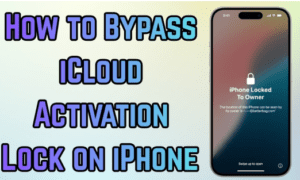Leverage trading in crypto is where opportunity and risk constantly collide. It looks like a fast track to bigger gains, borrow money, open larger trades, and hope the market moves your way. But without understanding how it works, it can wipe out your account just as fast.
Still, this isn’t a fringe corner of crypto. According to The Block, monthly Bitcoin futures volume on centralized exchanges averages over $2 trillion. That’s not casual trading, it’s high-stakes activity from traders who know exactly what’s at risk.
Every pro started somewhere. Losses, liquidations, they’ve seen it all. The difference is, they learned the rules before going in heavy. And that’s where this starts: the Beginner’s Guide to Leverage Trading in Crypto.
What Is Leverage Trading?
Leverage trading is the use of borrowed capital to open positions larger than the amount held in a trader’s account. In crypto, it allows individuals to gain exposure to bigger trades without needing to fund the entire position themselves. The borrowed portion is typically provided by the exchange and secured through a deposit known as margin.
Let’s say a trader puts up $100 and uses 10x leverage. That gives them control over a $1,000 position. The gains, or losses, don’t apply to just the $100 they put in, but to the entire position size. That’s what makes it powerful. But it cuts both ways. A small move in the wrong direction can quickly lead to liquidation, especially when the leverage is high.
Not every platform offers the same limits. Some cap leverage at 2x or 5x, while others go far higher, 100x, even 500x in a few cases. More leverage gives more room to grow, but it also means there’s less room for mistakes. That’s why risk control can’t be an afterthought when you’re trading with borrowed funds.
Basics of Leverage Trading
To become a pro trader, the most important thing is being able to understand the terms used in this space. If we put it simply, questions like how much capital to start with, what level of leverage to take, and how much of your portfolio is actually at risk, these all get compressed into technical terms that make them easier to follow once you’re familiar with them.
Let’s take a closer look at what these terms
Types of Leverage
When trading with leverage, how your capital is handled behind the scenes matters more than most realize. This is where margin types come in, each with a different approach to managing risk.
Isolated margin limits risk to the specific amount allocated for a single position. If the trade moves unfavorably, only the assigned margin is affected. The remainder of the account remains untouched. This makes isolated margin suitable for testing new strategies or managing exposure in volatile markets.
Cross margin, in contrast, treats the full account balance as shared collateral across all open positions. Profits from one position may offset losses in another. This structure reduces the likelihood of immediate liquidation, but introduces significantly more risk.
When all positions are linked, a single trade, especially one with excessive leverage, can affect the entire portfolio. The additional flexibility comes at the cost of exposing a greater portion of your funds to market fluctuations.
Traders should approach margin selection based on their objectives and experience level. Isolated margin provides clarity and control. The trader defines exactly how much capital is at risk per trade. Cross margin offers more flexibility, but increases the chances of a larger loss if positions are not actively monitored. In practice, one poor decision under cross margin can result in the loss of the entire balance.
Account Margins
In leveraged trading, margin refers to the capital a trader must provide in order to open and maintain a position. There are two main types to understand: initial margin and maintenance margin.
The initial margin is the minimum amount you need to open a leveraged trade. It’s calculated based on your leverage size and the total position value. Higher leverage means lower initial margin, but it also means less buffer before liquidation.
Maintenance margin, on the other hand, is the amount you need to keep the position active. If the value of your position falls and your margin drops below this level, the system will start reducing or closing the position to prevent further loss.
Liquidation
Liquidation happens when the value of your position drops so much that the exchange is forced to close it. This usually occurs when your margin balance falls below the required maintenance level.
Most traders see liquidation as a failure, but really, it’s just the system doing what it’s programmed to do; limit losses beyond what you can afford. The closer you are to maximum leverage, the smaller the market move needed to trigger liquidation.
How Does Leverage Trading Work?
Leverage trading follows a step-by-step process, and understanding how each part fits together is key to being successful in your first few trades, or at least grabbing some learning out of it.
First, you deposit funds into your exchange account. This becomes your margin; collateral that allows you to borrow additional capital from the platform. How much you can borrow depends on the leverage ratio you choose. A 10x leverage means you’re controlling 10 times more than what you’ve put up. If you fund $500, you’re trading with $5,000.
Once your account is funded, you select the trading pair, say BTC/USDT, choose your leverage, and set your position size. But this isn’t just guesswork. Behind every trade, there should be a risk plan. One that answers: how much of your account are you risking? Where is your stop-loss? What happens if you’re wrong ten times in a row?
Most traders don’t think that far ahead. But if you’re using leverage, you have to. Risking 5% of your capital per trade might feel okay in the moment, but 10 losing trades at that level cuts your account in half. That’s hard to come back from. This is why seasoned traders rarely risk more than 1%–2% on a single trade.
As the market moves, the exchange constantly monitors your collateral. If the trade goes against you and your margin balance drops below the maintenance margin, the platform will liquidate your position. This means the system forcibly closes your trade to prevent further losses, and your collateral is partially or fully wiped out.
Most beginners focus only on how much they can make if they’re right. But professionals work the numbers backward from the worst-case scenario. They calculate how much they’re willing to lose, how often they can afford to be wrong, and whether the upside justifies the risk.
And once those fundamentals are locked in, the real learning begins. Paper trading is a smart place to start. Or, if you want a more realistic environment, several of the best crypto leverage trading platforms offer demo accounts where you can build confidence without putting capital at risk. But going live comes with more variables. Funding rates can quietly drain your margin. Open interest shifts can trigger unexpected volatility. Liquidation spikes, macro news, and exchange-specific data, they all affect the outcome. It’s not just about placing the trade. It’s about learning how to stay in control once it’s live.
Is Leverage Right for You?
That depends. Leverage can open doors, but it shuts them just as fast if you’re careless. It’s not about being fearless, it’s about knowing your limits. If you’re willing to plan ahead, manage risk properly, and not bet the entire account on one move, then maybe you’re ready to test it out. Keep your exposure small. Learn to lose without panic. That’s part of the game. Start slow, build up. The goal isn’t to trade big, it’s to stay in the game long enough to get better.



































